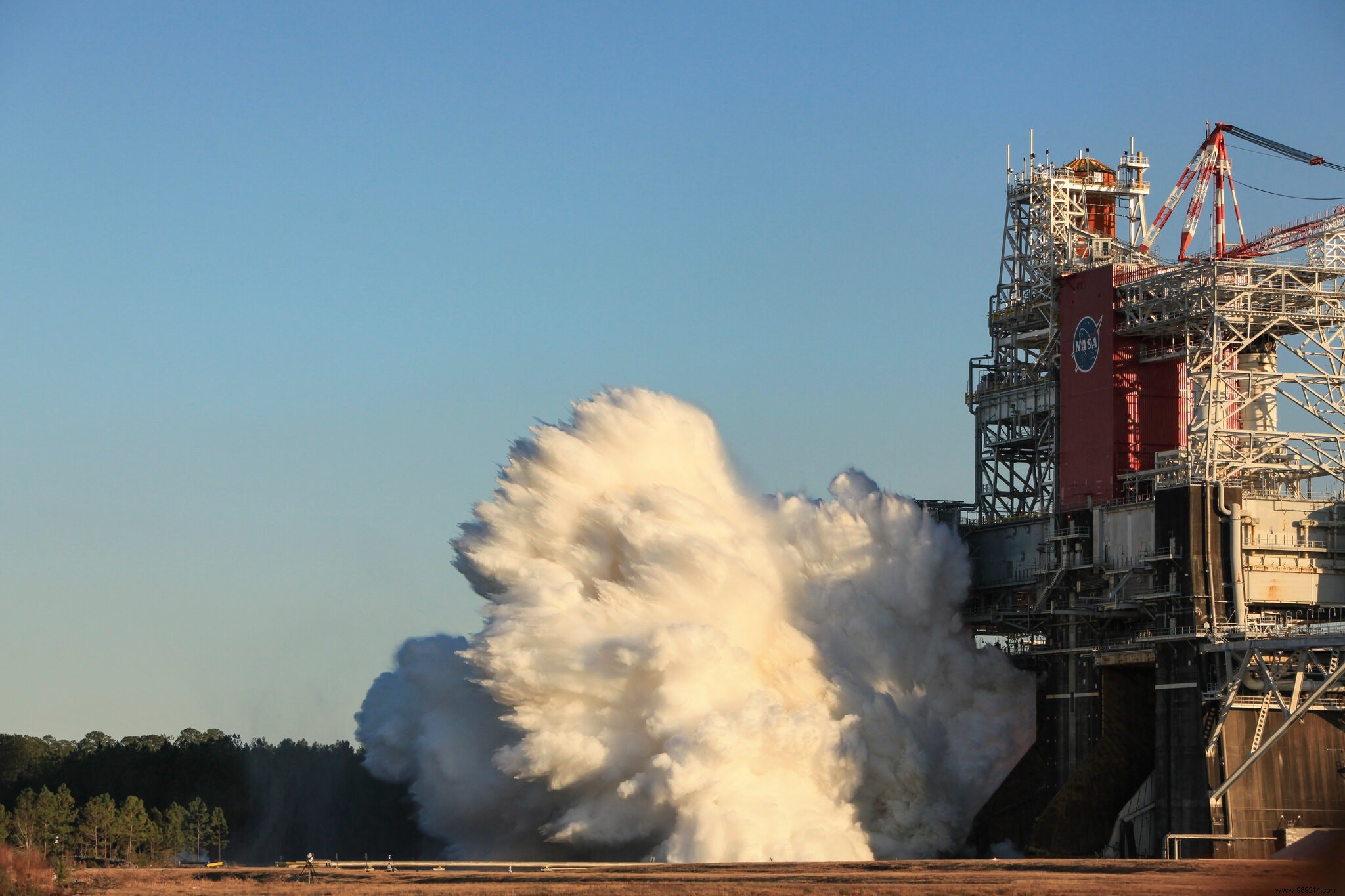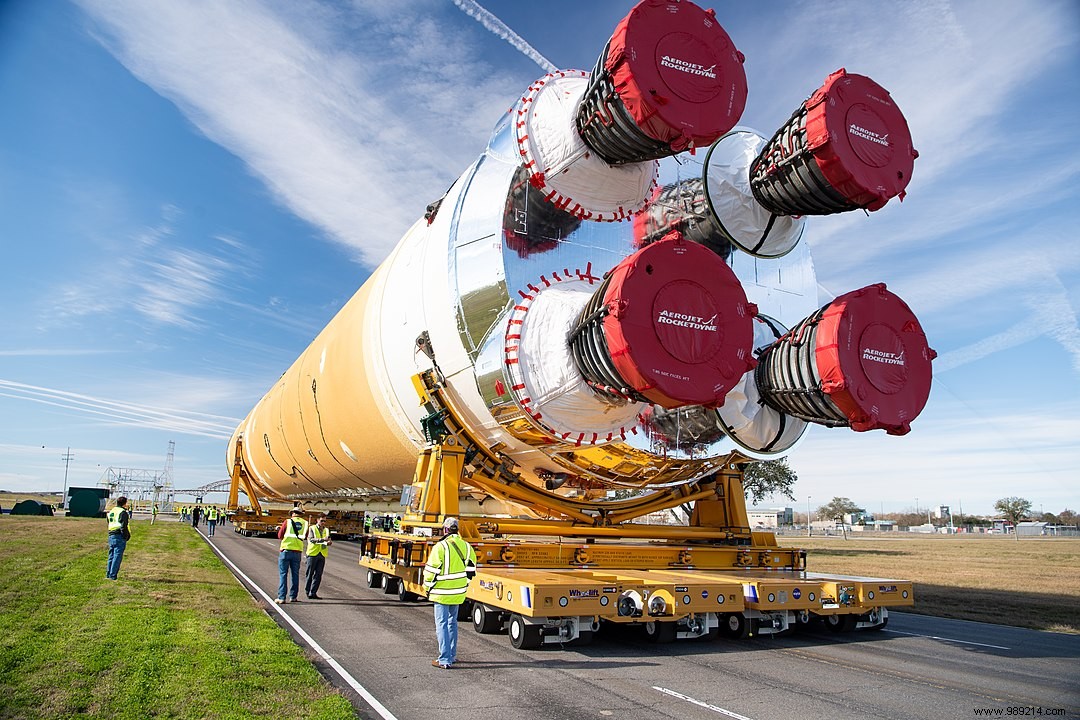The United States is unlikely to build a launch vehicle like the Space Launch System again. This rocket, supposed to propel future astronauts to the Moon, thus represents the end of a story.
The most powerful rocket built by NASA since the Apollo program finally stood up for several weeks. At least, the first version of his booster. Housed in its test platform at Stennis Space Center, Mississippi, the apricot-colored Space Launch System (SLS) core section stands today as the cornerstone of NASA's ambitions. Developed since 2011, it is indeed this rocket that will be responsible for sending crews to the Moon, and why not later to the planet Mars.
After the failure of the first static firing test of its booster, NASA has just operated a second test this Thursday. The four main engines then began to roar for 8 minutes and 19 seconds, enough to allow the engineers to certify the first stage of their enormous rocket.
With this test completed, NASA personnel now have thirty days to get this booster and rocket engines back to "new" condition before transferring everything to Kennedy Space Center in Florida. Here, the SLS can finish being assembled (second stage + Orion capsule). Once this phase is complete, a few more tests will be scheduled before launch.

For the time being, this rocket is still expected to lift an Orion capsule responsible for circling the Moon before returning to Earth. Its first crewed mission is scheduled for 2023. This flight will be the first to free astronauts beyond low Earth orbit since 1972.
On paper, the Space Launch System thus appears as an ambitious launcher aiming to serve missions that are just as ambitious. But it also represents something else:the end of the line. It is indeed probably the last class of rocket that NASA is likely to build.
NASA's desire to send astronauts back to deep space is not new, but the agency lacked a designed, tested, and validated vehicle. Finally, here we are, but this project drags a few pebbles in the shoe. And for good reason, as David W. Brown points out for the New York Times , “the Space Launch System was born not on the drafting tables of engineers, but on the desks of senators” .
And therein lies the problem. In 2010, members of Congress did indeed legislate the existence of this super-heavy launcher, but the politicians had no particular design in mind, and a limited budget. They demanded that NASA build on the parts of these old space shuttles as soon as possible, and asked that the result be launched by 2016.
Today, the program has exceeded its budget by several billion dollars, and its first launch may not come until 2022.

This might not have been a "problem" if NASA had been alone in the market. But today, we have SpaceX. The company has started transporting astronauts to the International Space Station, and is now targeting the Moon or the planet Mars. That being said, if SpaceX ships continue testing, they will only be truly ready to transport astronauts beyond low Earth orbit in a few years.
So in the meantime, if NASA wants to bring astronauts back to the Moon, the Space Launch System remains its only means of getting there. Each launch still costs around two billion dollars, and its boosters cannot be reused. On the other hand, this rocket does not represent the future. The Space Launch System is only a "useful transitional product" that will inevitably lead NASA to rely on other contractors for future missions.
Whether the Space Launch System program ends next year or in ten years, it won't be the end of a chapter, but the end of a long story .